This article was co-authored by Laura Marusinec, MD. Dr. Marusinec is a board certified Pediatrician at the Children's Hospital of Wisconsin, where she is on the Clinical Practice Council. She received her M.D. from the Medical College of Wisconsin School of Medicine in 1995 and completed her residency at the Medical College of Wisconsin in Pediatrics in 1998. She is a member of the American Medical Writers Association and the Society for Pediatric Urgent Care.
There are 26 references cited in this article, which can be found at the bottom of the page.
This article has been viewed 483,058 times.
Your body hosts hundreds of thousands of bacteria that play a major role in maintaining your health. A bacterial infection may occur when these bacteria reproduce out of control and invade other parts of your body or when harmful bacteria are introduced to your system. Bacterial infections range from mild to severe. Keep reading to learn how to detect and treat a bacterial infection.
Steps
Getting Medical Treatment
-
1Note your symptoms. The following are symptoms of potential bacterial infections that may require treatment by a physician.[1]
- Fever, especially with a severe head or neck ache or chest pain
- Trouble breathing or pain in the chest
- A cough that lasts longer than a week
- Rash or swelling that won’t go down
- Increasing pain in the urinary tract (which may be pain with urination, in the lower back, or in the lower abdomen)
- Pain, swelling, warmth, pus drainage or red streaks extending from a wound.
-
2Schedule an appointment with your doctor. The only sure way to determine what types of bacterial infection you have is to visit a doctor. If you think you have an infection, call your doctor and schedule an appointment right away. Your doctor may perform a blood test, urine culture, or swab of the infected area to determine what type of infection you have.[2]
- Remember that bacterial infections can only be diagnosed by a doctor. If you think that you have an infection, note the symptoms and go to the doctor for treatment as soon as possible.
Advertisement -
3Ask your doctor about different types of antibiotics. Asking your doctor about the different types of antibiotics that are available will make it easier for you to understand what your doctor is prescribing.[3]
-
Broad-spectrum antibiotics fight a wide variety of bacteria. Broad-spectrum antibiotics treat gram positive and negative bacteria, so your doctor may prescribe one of these types of antibiotics if he or she is unsure about what bacteria you have.
- Amoxicillin, Augmentin,Cephalosporins(4th and 5th Generation),Tetracycline Aminoglycosides and Fluoroquinolones (Ciprofloxacin) are examples of broad-spectrum antibiotics.
- Medium-spectrum antibiotics target a group of bacteria. Penicillin and bacitracin are popular medium-spectrum antibiotics.
- Narrow-spectrum antibiotics are made to treat one specific kind of bacteria. Polymyxins fall into this small category of antibiotics. Treatment is much easier and more effective when your doctor knows what kind of bacterial infection you have.
-
Broad-spectrum antibiotics fight a wide variety of bacteria. Broad-spectrum antibiotics treat gram positive and negative bacteria, so your doctor may prescribe one of these types of antibiotics if he or she is unsure about what bacteria you have.
-
4Follow your doctor’s instructions for how to treat your infection. Your doctor will select the type of antibiotic that works best against the specific bacteria that has caused your infection. Keep in mind that there are many different kinds of antibiotics and only a doctor can prescribe an antibiotic to you.[4]
- Make sure that you know exactly how much of the antibiotic you are supposed to take, and when you are supposed to take it. Some antibiotics need to be taken with food, some need to be taken at night, etc. Ask your doctor or pharmacist if you don’t understand the dosage instructions.
-
5Take the full course of antibiotics that your doctor prescribes. If you do not take the full course, your infection may get worse. You may also become antibiotic resistant, which can make it hard to treat other infections.[5]
- Even if you feel better, you need to take all of the antibiotics to kill the disease causing bacteria that is left in your body. If you stop treatment too soon, you may never fully get rid of the infection.
Cleaning a Wound to Prevent Bacterial Infection
-
1Prevent a skin infection by properly cleaning and bandaging a wound right away. Proper first aid treatment is essential to helping prevent a bacterial infection, but you should not attempt to treat a severe flesh wound by yourself. If the wound is deep, wide, or bleeding a lot, you should seek medical help immediately.[6]
-
2Wash your hands before treating a wound. If you treat a wound with dirty hands, you will increase the chances of a bacterial infection. Wash your hands with warm water and antibacterial soap for 20 seconds and dry them well. Wear clean vinyl or latex gloves if they are available.[7]
- Avoid latex gloves if you have a latex allergy.
-
3Keep pressure on the wound until it stops bleeding. If the bleeding is severe, seek medical attention immediately. Do not attempt to treat a severe wound by yourself. Go to an emergency room or call 911.[8]
-
4Clean the wound with warm running water. Hold the wound under a gentle stream of running water to clean it. Do not use soap on the wound unless it appears visibly dirty. If it does seem dirty, clean around the wound gently with a mild soap. Also, do not use hydrogen peroxide to clean a wound. Hydrogen peroxide can interfere with healing.[9]
- If you notice any debris in the wound, you can try to remove it with tweezers that have been sterilized with alcohol. If you do not feel comfortable doing that, you can go to a doctor for treatment.
-
5Apply ointment. An antibiotic ointment, such as Neosporin, can help a wound heal faster and can help keep infection at bay. Gently apply the ointment to the wounded area after cleaning.[10]
-
6Bandage the wound. If the wound is a small scrape, leave it open to the air. If the wound is deeper, cover it with a sterile gauze. A nonstick bandage held in place with medical tape is the best option for larger wounds, though large band-aids may also work. Be sure that you do not put the adhesive area of a bandage over a wound, as it may re-open the wound when you remove it.[11]
- Change the gauze once a day if it is dirty. A good time to change the gauze is when you take a shower.
-
7Watch for signs of infection. If the wound is red, swollen, draining pus, streaking red away from the wound, or just looking worse, call your doctor.[12]
Preventing Bacterial Infection from Food
-
1Keep your hands clean. Before you handle food, you should always wash your hands with antibacterial soap and water for 20 seconds. Dry your hands well with a clean, dry towel. If you handle raw meat, wash your hands after handling the meat to avoid cross contamination of other foods or surfaces.[13]
-
2Wash your food well. Wash raw fruits and vegetables before you eat them. Even organic foods need to be washed.Use an antibacterial cleaner on surfaces that come into contact with raw food to kill potentially hazardous bacteria.[14]
- Use a different cutting board for each type of food. Use different cutting boards for fruits and veggies and raw meats to avoid cross-contamination.
-
3Cook your food well. Follow the directions when you prepare raw foods to make sure that you cook them properly. Use a meat thermometer to make sure that you cook meat to the right temperature.[15]
Preventing the Spread of Bacterial Infections
-
1Wash your hands. Thorough and frequent hand washing (particularly after touching your face, mouth, or nose if you’re sick, after touching another person who is sick, or after changing a baby’s diaper) can cut down dramatically on the number of germs that you are exposing yourself to.[16]
- Wash your hands using soap and warm (or hot) water for at least 20 seconds. Be sure to clean between your fingers and under your fingernails. Then rinse your hands well with clean water.[17]
-
2Cover coughs and sneezes. Help others stay well when you are sick by covering your mouth and nose when you cough or sneeze. This will help keep your germs reigned in, not allowing them to fly across the room.[18]
- Wash your hands after coughing or sneezing into your hands before touching another person or common surfaces such as door knobs or light switches.
- You can also cover your mouth or nose with the crook of your arm (the inside of your elbow). This can help limit the spread of germs without causing you to need to wash your hands every 2 minutes while you are sick.
-
3Stay home when you are sick. You can limit the spread of germs by staying away from others while you are ill. If you can, take time off of work (or telecommute for the day); your coworkers will likely appreciate your considerateness.[19]
-
4Keep your children home when they are sick. Day care centers and schools are often teeming with infectious germs. It’s common for infections to bounce around from child to child, causing miserable kids and stressed-out parents. Avoid this by keeping your child home when she is sick. She will likely get better faster with your care, and you are helping prevent others from becoming sick as well.[20]
-
5Stay current on vaccines. Be sure that you and your children have received all of the recommended vaccines for your age and geographic area. Vaccines help prevent infections and diseases before they happen, which is preferable to treating them after they have occurred.[21]
Understanding Common Bacterial Infections
-
1Understand staph infections. Staphylococci, more commonly referred to as “staph,” are gram-positive cocci in clusters. The “gram” in gram-positive refers to the gram stain pattern of the bacteria when viewed under the microscope. The “cocci” indicates the shape when viewed under a microscope. This types of bacteria usually invades the body through a cut or wound.[22]
- Staph aureus is the most common type of staph infection. Staph aureus may cause pneumonia, food poisoning, skin infections, blood poisoning, or toxic shock syndrome.
- MRSA (methicillin-resistant Staphylococcus aureus) is a staph infection that is hard to treat. MRSA does not respond to some antibiotics and it is thought that the strain developed in response to antibiotics. Therefore, many doctors will not prescribe antibiotics unless it is absolutely necessary.[23]
-
2Learn about strep infections. Streptococci, more commonly referred to as "strep," are gram-positive cocci in chains and a common type of bacteria. Streptococci cause strep throat, pneumonia, cellulitis, impetigo, scarlet fever, rheumatic fever, acute glomerulonephritis, meningitis, otitis media, sinusitis, and many more infections.[24]
-
3Know about Escherichia coli. Escherichia coli, or E. coli, is a gram-negative rod, that is found in the waste material of animals and humans. There is a large, diverse group of E.Coli bacteria. Some strains are harmful, but most strains are not. E.Coli can cause diarrhea, gastrointestinal infections, urinary tract infections, respiratory infections, and other infections.[25]
-
4Understand Salmonella infections. Salmonella is a gram-negative rod that can disrupt the digestive tract. Salmonella can cause severe illness and it usually requires a lengthy antibiotic treatment. Raw or undercooked poultry, meat and eggs can contain salmonella.[26]
-
5Understand Haemophilus influenzae infections. Haemophilus influenzae are gram-negative rods. Haemophilus influenzae is transmitted by air so it is highly contagious. It can cause epiglottis, meningitis, otitis media, and pneumonia. This bacteria can cause a severe infection that may lead to a lifelong disability. It can even be fatal.[27]
- Haemophilus influenzae is not covered by the common “flu shot,” which targets viral influenza, but most children are vaccinated against Haemophilus influenzae early in childhood (it is called the “Hib” vaccine).[28]
Expert Q&A
-
QuestionWhat am I allowed to eat if I have a bacterial stomach infection?
 Laura Marusinec, MDDr. Marusinec is a board certified Pediatrician at the Children's Hospital of Wisconsin, where she is on the Clinical Practice Council. She received her M.D. from the Medical College of Wisconsin School of Medicine in 1995 and completed her residency at the Medical College of Wisconsin in Pediatrics in 1998. She is a member of the American Medical Writers Association and the Society for Pediatric Urgent Care.
Laura Marusinec, MDDr. Marusinec is a board certified Pediatrician at the Children's Hospital of Wisconsin, where she is on the Clinical Practice Council. She received her M.D. from the Medical College of Wisconsin School of Medicine in 1995 and completed her residency at the Medical College of Wisconsin in Pediatrics in 1998. She is a member of the American Medical Writers Association and the Society for Pediatric Urgent Care.
Board Certified Pediatrician Usually you can eat or drink healthy foods when you have a bacterial stomach infection. You may want to avoid fatty, greasy, or spicy foods or too much milk. Usually bland foods — like toast and bread, bananas, rice, and cereal — are good choices. Yogurt may be helpful for some. Drink plenty of fluids such as water or sports drinks to keep hydrated.
Usually you can eat or drink healthy foods when you have a bacterial stomach infection. You may want to avoid fatty, greasy, or spicy foods or too much milk. Usually bland foods — like toast and bread, bananas, rice, and cereal — are good choices. Yogurt may be helpful for some. Drink plenty of fluids such as water or sports drinks to keep hydrated. -
QuestionWhat do you need to do when you start getting older and get an infection?
 Laura Marusinec, MDDr. Marusinec is a board certified Pediatrician at the Children's Hospital of Wisconsin, where she is on the Clinical Practice Council. She received her M.D. from the Medical College of Wisconsin School of Medicine in 1995 and completed her residency at the Medical College of Wisconsin in Pediatrics in 1998. She is a member of the American Medical Writers Association and the Society for Pediatric Urgent Care.
Laura Marusinec, MDDr. Marusinec is a board certified Pediatrician at the Children's Hospital of Wisconsin, where she is on the Clinical Practice Council. She received her M.D. from the Medical College of Wisconsin School of Medicine in 1995 and completed her residency at the Medical College of Wisconsin in Pediatrics in 1998. She is a member of the American Medical Writers Association and the Society for Pediatric Urgent Care.
Board Certified Pediatrician It depends more on your overall health than age. If you are healthy overall, then your body should be able to fight off an infection, often with the help of your doctor. Taking antibiotics and keeping the area clean can help you heal.
It depends more on your overall health than age. If you are healthy overall, then your body should be able to fight off an infection, often with the help of your doctor. Taking antibiotics and keeping the area clean can help you heal.
Warnings
- Watch for signs of an allergic reaction when you take antibiotic medications. You can develop a reaction at any age regardless of past exposure to a particular antibiotic. Signs of a reaction include skin rashes (especially hives or welts), itching and shortness of breath. Seek immediate medical attention or call 911 if you are having trouble breathing, swelling of your lips, tongue, or airway or are feeling faint or dizzy. Otherwise, call your doctor if you think you have a reaction, and stop taking the antibiotic.[30]⧼thumbs_response⧽
- Don't take tetracycline with milk.[31]⧼thumbs_response⧽
- Some studies suggest that children under the age of one who receive broad-spectrum antibiotics may have a higher risk of developing asthma. But keep in mind that if your doctor prescribes a broad-spectrum antibiotic to your child, it is probably because the benefits outweigh the risks. A broad-spectrum antibiotic may be the only option to fight the infection.[32]⧼thumbs_response⧽
- Adults who take broad-spectrum antibiotics can become resistant to narrow spectrum antibiotics.⧼thumbs_response⧽
- Tetracycline are contraindicated in pregnancy and children.[33]⧼thumbs_response⧽
References
- ↑ https://www.healthdirect.gov.au/bacterial-infections
- ↑ https://www.healthdirect.gov.au/bacterial-infections
- ↑ https://www.healthdirect.gov.au/bacterial-infections
- ↑ https://www.healthdirect.gov.au/bacterial-infections
- ↑ https://www.healthdirect.gov.au/bacterial-infections
- ↑ https://www.nhs.uk/common-health-questions/accidents-first-aid-and-treatments/how-do-i-clean-a-wound/
- ↑ https://www.cdc.gov/handwashing/when-how-handwashing.html
- ↑ https://medlineplus.gov/ency/article/000045.htm
- ↑ https://www.nhs.uk/common-health-questions/accidents-first-aid-and-treatments/how-do-i-clean-a-wound/
- ↑ https://www.aafp.org/afp/2004/0601/p2647.html
- ↑ https://www.aafp.org/afp/2004/0601/p2647.html
- ↑ https://www.nhs.uk/conditions/cuts-and-grazes/
- ↑ https://www.cdc.gov/handwashing/handwashing-kitchen.html
- ↑ https://www.foodsafety.gov/keep-food-safe/4-steps-to-food-safety
- ↑ http://www.foodsafety.gov/keep/charts/mintemp.html
- ↑ https://www.cdc.gov/handwashing/why-handwashing.html
- ↑ http://www.cdc.gov/features/handwashing/
- ↑ https://www.cdc.gov/healthywater/hygiene/etiquette/coughing_sneezing.html
- ↑ https://www.cdc.gov/flu/business/stay-home-when-sick.htm
- ↑ https://www.cdc.gov/flu/business/stay-home-when-sick.htm
- ↑ https://www.cdc.gov/vaccines/index.html
- ↑ https://medlineplus.gov/staphylococcalinfections.html
- ↑ https://www.cdc.gov/mrsa/community/index.html
- ↑ https://www.cdc.gov/groupastrep/diseases-public/index.html
- ↑ http://www.cdc.gov/ecoli/
- ↑ https://www.hopkinsmedicine.org/health/conditions-and-diseases/salmonella-infections
- ↑ http://www.cdc.gov/hi-disease/about/index.html
- ↑ https://www.cdc.gov/hi-disease/vaccination.html
- ↑ https://www.cdc.gov/antibiotic-use/community/pdfs/penicillin-factsheet.pdf
- ↑ https://www.nhs.uk/conditions/antibiotics/side-effects/
- ↑ https://www.uofmhealth.org/health-library/d00041a1
- ↑ https://pubmed.ncbi.nlm.nih.gov/31149702/
- ↑ https://www.uofmhealth.org/health-library/d00041a1
About This Article
To treat a bacterial infection, it's important that you visit your doctor so they can diagnose you and prescribe you the right kind of antibiotics. Once your doctor has determined what kind of bacterial infection you have, they'll choose the appropriate antibiotics and give you dosage instructions. Make sure you follow the instructions and take the full course of your antibiotics, even if you start to feel better before the course is over. To learn how to prevent bacterial infections, scroll down!




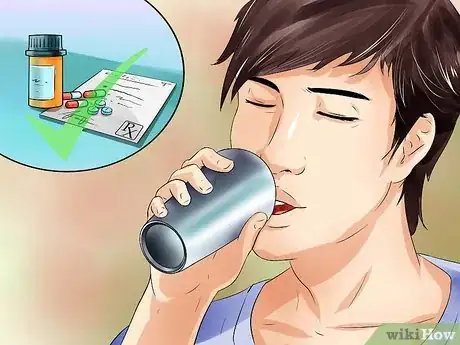
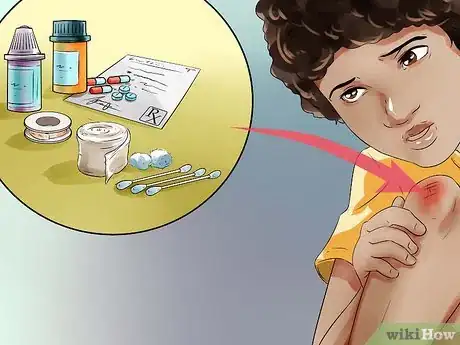
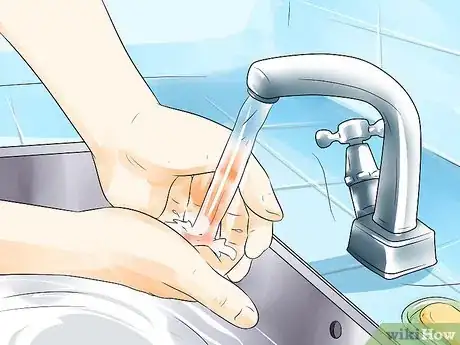
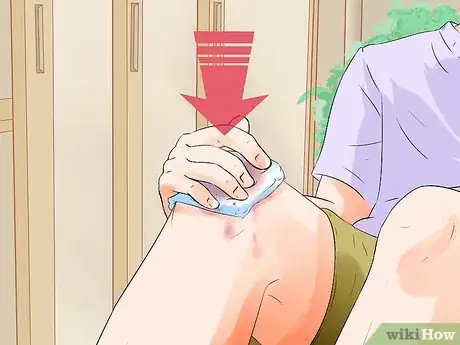
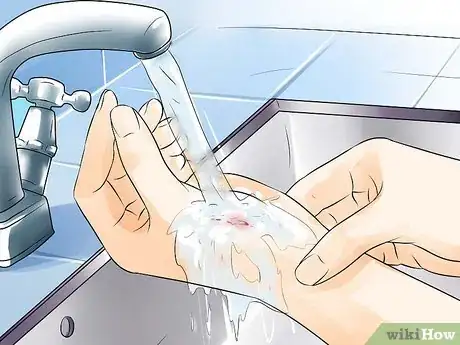
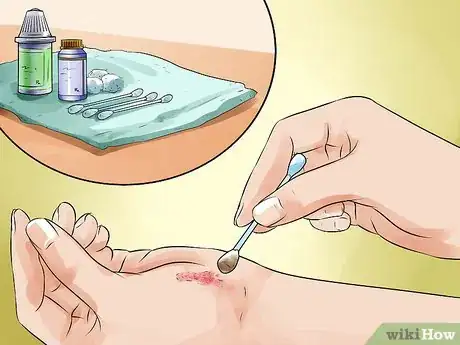
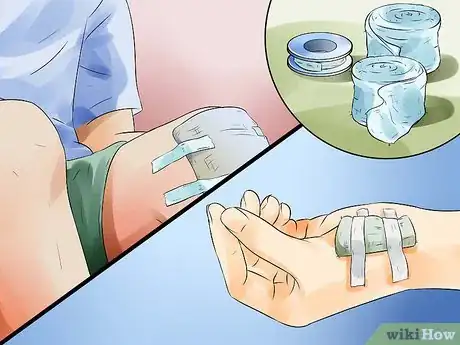
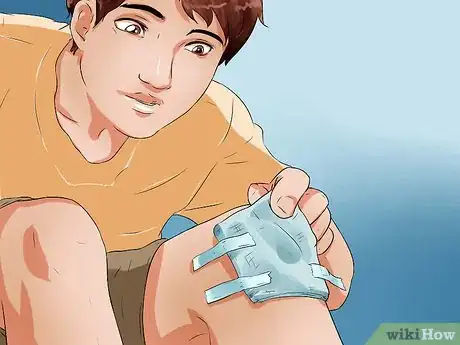
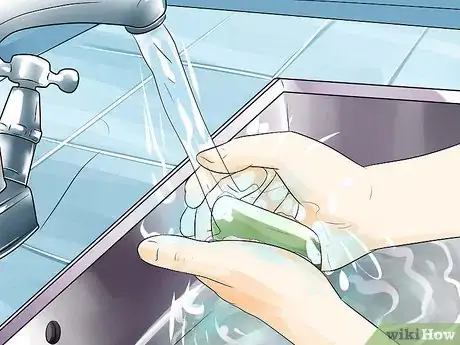


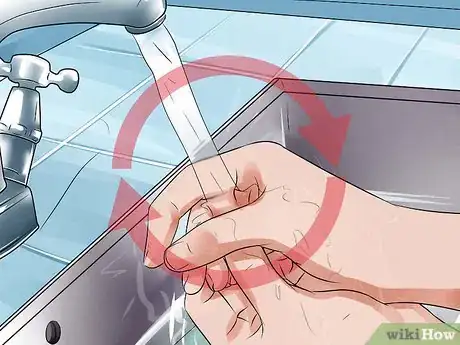
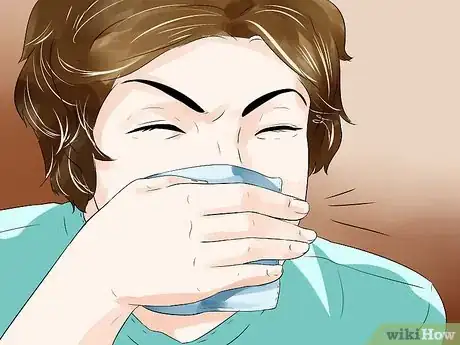

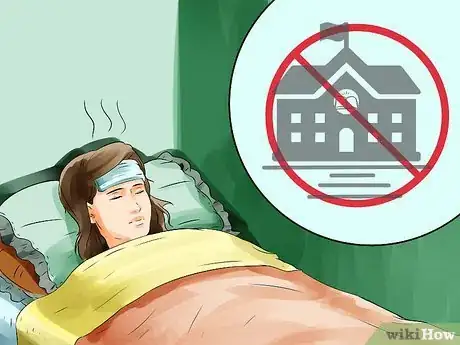
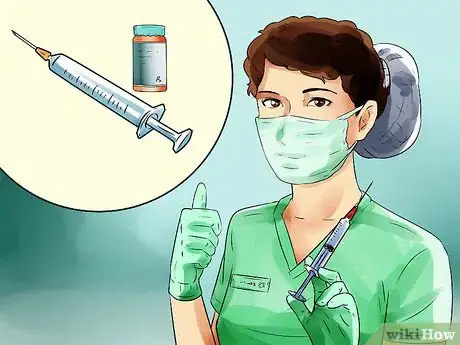
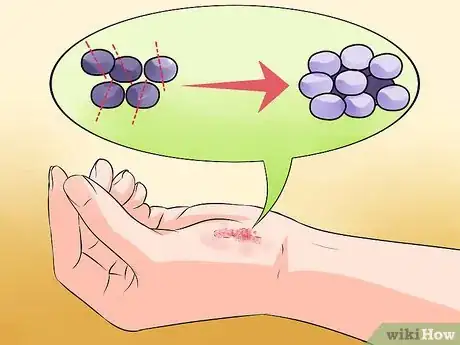
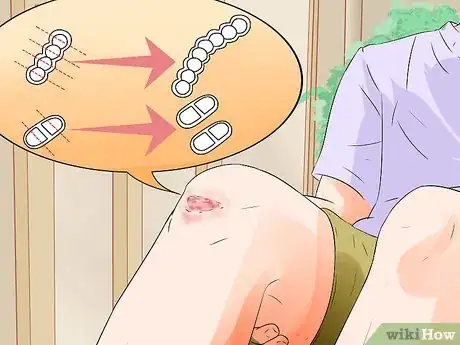

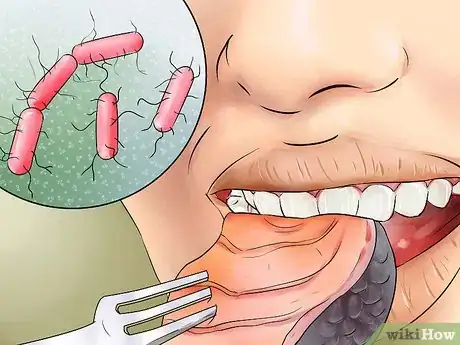


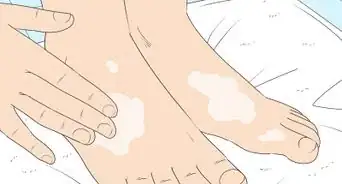



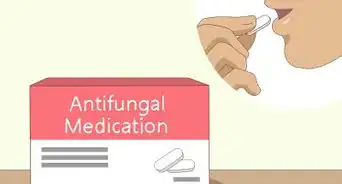

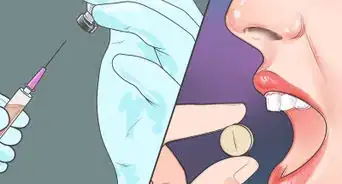

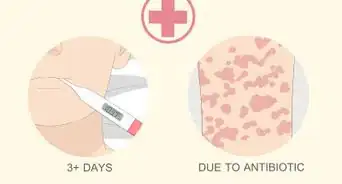















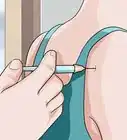



































Medical Disclaimer
The content of this article is not intended to be a substitute for professional medical advice, examination, diagnosis, or treatment. You should always contact your doctor or other qualified healthcare professional before starting, changing, or stopping any kind of health treatment.
Read More...